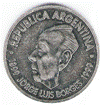Modern Languages and Literatures, Department of
Date of this Version
January 2004
Abstract
In Galdós' time, the tensions between such diverse phenomena as coins and credit, free trade and protectionist tariffs, factory work and domestic economy, masculine and feminine, and private and public exacerbated friction among peoples—those of "pueblo" and rural origins, whose voices rasped and whose bright colors raked the eye, and a nascent, insecure bourgeosie who, fearful of the masses, strove to imitate the aristocracy. Old and new converged also with the question of suffrage and citizenship to aggravate social malaise and political upheavals—Carlist wars, palace intrigues, the Revolution of 1868 and overthrow of Queen Isabel, the brief reign of Amadeo of Savoy, the aborted First Republic and the Bourbon Restoration (1875-1885), which reached Spain from England in the imported person of Alfonso XII. These turbulent events undergird the cultural, historical, and political events of the novels by Benito Pérez Galdós (1843–1920) to be discussed in this chapter.
Galdós is the author of seventy-seven novels, twenty-six original plays, and numerous occasional pieces, written between 1867 and 1920. These divide into two main categories: the historical and the contemporary social novels, now more appropriately described as "novels of modernity" The forty-six historical novels, called "Episodios nacionales," make up five series, each consisting of ten interconnected novels, except the fifth series, left unfinished. The thirty-one "novels of modernity," published between 1870 and 1915, also divide into two groups: "Novelas de la primera época" ("Novels of the Early Period," 1870–1879) and "Las novelas de la serie contemporánea" ("The Contemporary Social Novels," 1881–1915). The novels of the early period comprise Galdós' first attempts at novel writing, as well as four so-called "thesis novels": Doña Perfecta (1876), the sequel Gloria (1876–1877), Marianela (1878), and La familia de León Roch ("The Family of León Roch," 1878–1879). The next group of novels represents what Galdós called his "segunda manera"—his "second style," a "different kind of writing ... a more sophisticated and varied mode of narrative presentation."


Comments
Published in The Cambridge History of Spanish Literature, edited by David T. Gies (Cambridge & New York: Cambridge University Press, 2004), pp. 392–409. Copyright © 2004 Cambridge University Press. Used by permission.